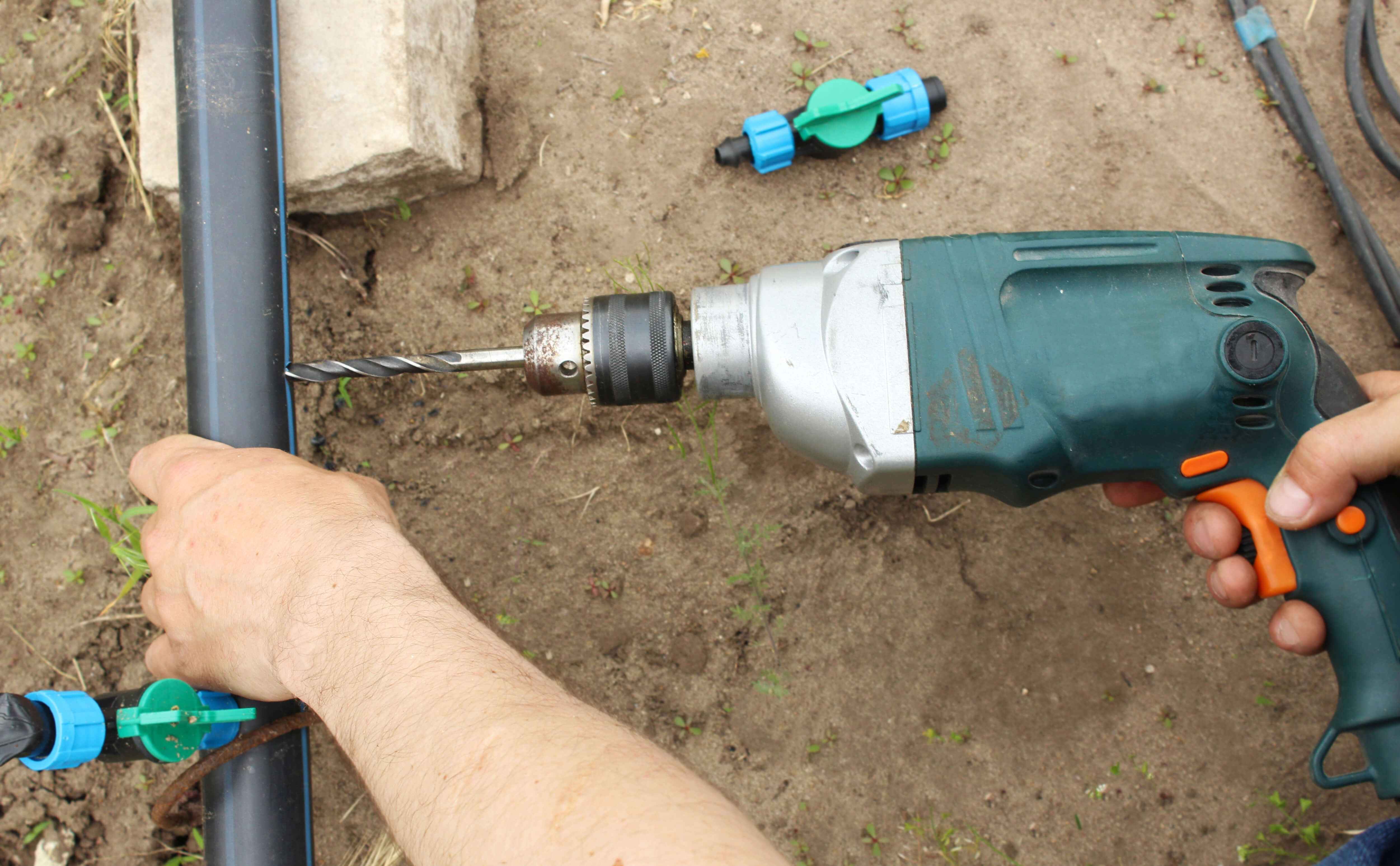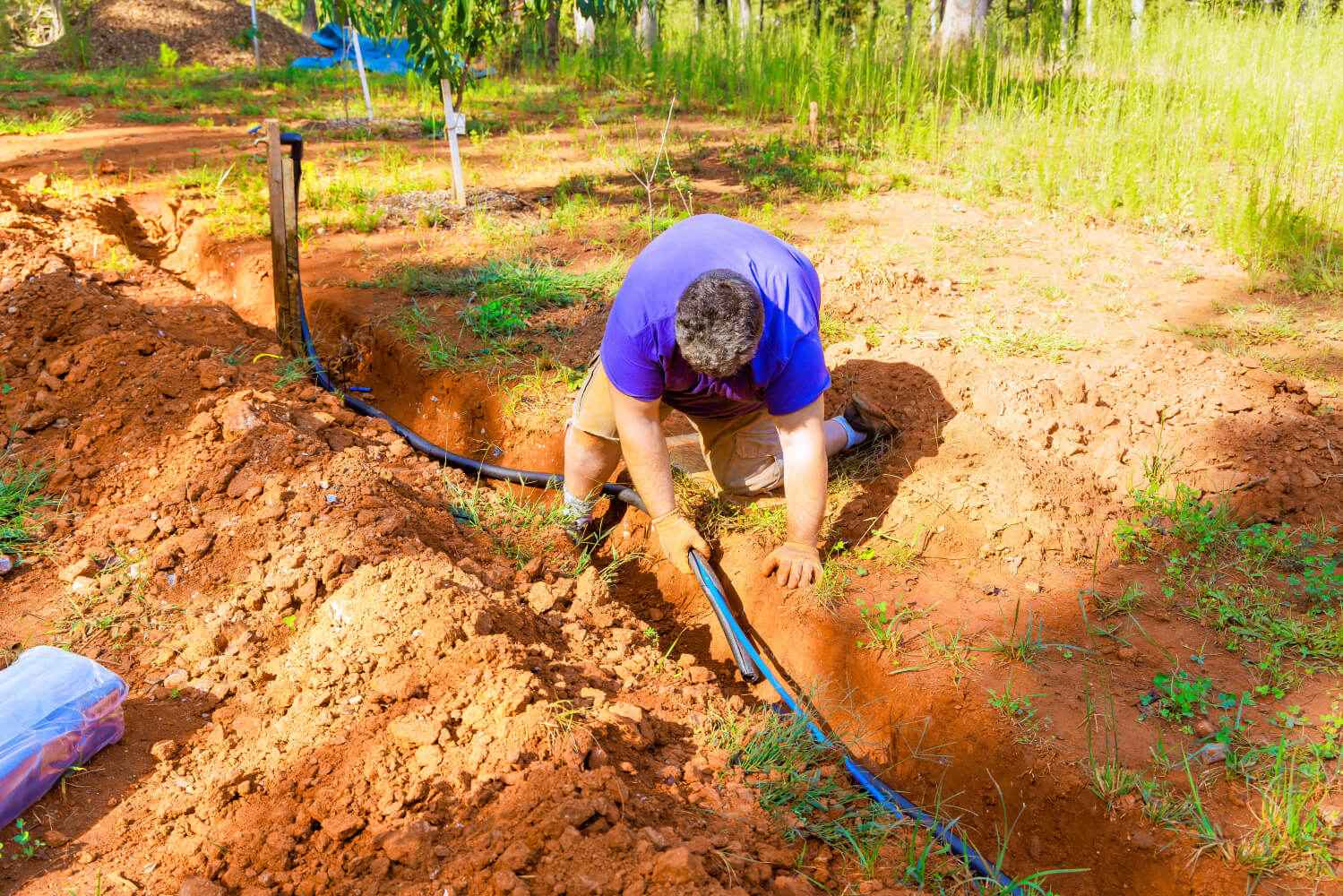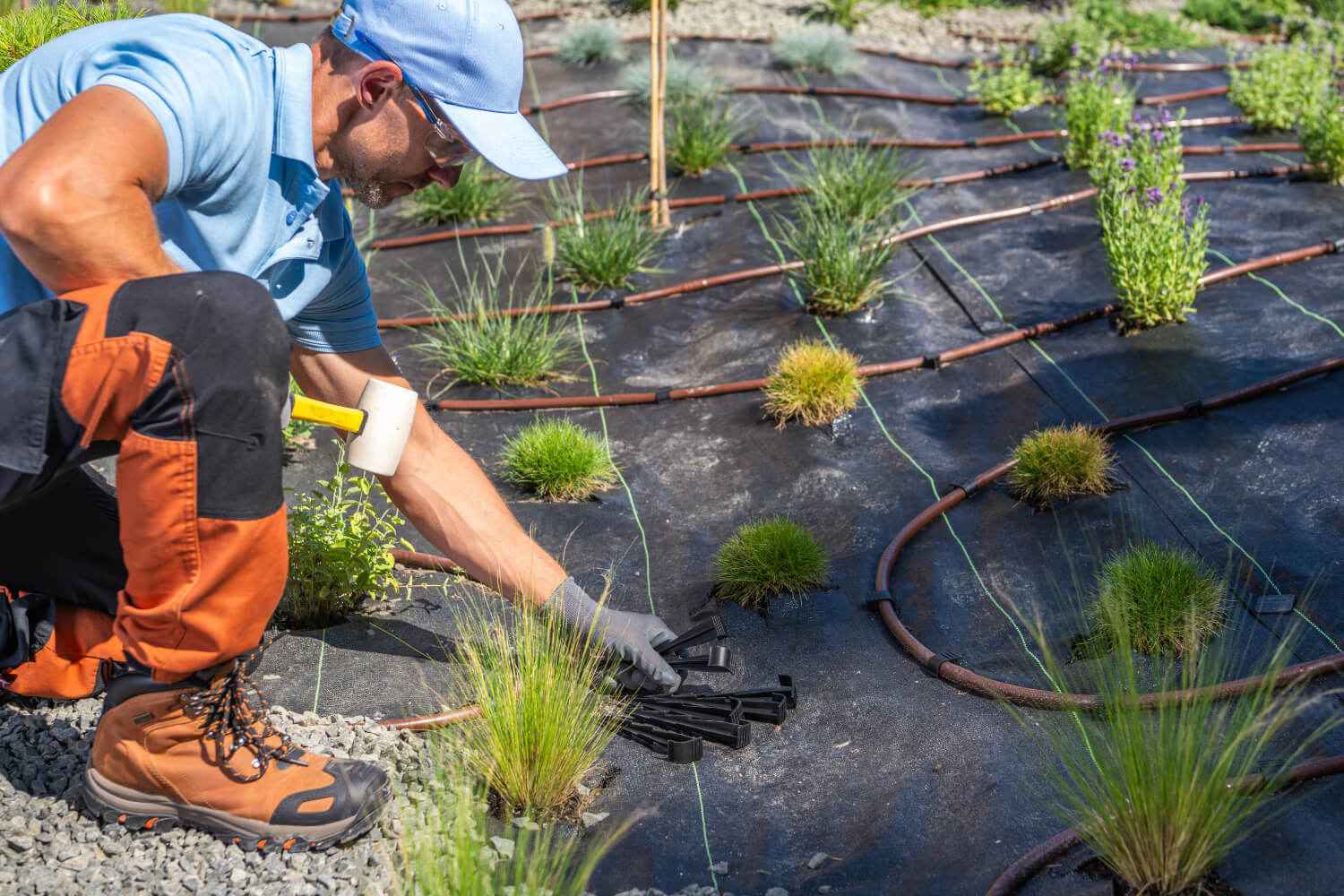Gear Up for Irrigation Season
Maximize Efficiency with the Right Tools
The irrigation system is the backbone of any productive farming operation. Whether managing a few acres or hundreds, consistent and efficient water delivery is essential to healthy crops, stable yields and overall farm sustainability. A well-built system not only supports day-to-day water needs but also helps prevent costly downtime caused by leaks, clogs or equipment failure.
Just as important are the tools and equipment used to build and maintain that system. From trenching and cutting to sealing and pressure testing, the right gear can streamline installation, simplify repairs and extend the lifespan of components.
Trenching and Digging
When burying mainlines, lateral lines or drip tubing, trenching and digging equipment is essential to have on hand. Depending on the size of the farm, the layout of the irrigation system and soil conditions, the right tool can make the difference between a quick install and a time-consuming project.
Walk-behind trenchers like the DITCH WITCH 100SX or Barreto 712MTH are highly effective for fast, uniform trenches over long distances. These machines are designed to dig narrow trenches ideal for laying poly tubing or PVC pipe with minimal surface disruption.
For smaller jobs or areas where machinery can’t reach, manual tools are crucial. Round-point shovels and drain spades work well for creating or widening trenches, while a pick mattock or trenching hoe, such as the AMES True Temper Mattock, is useful for breaking through compacted or rocky soil.

Cutting and Punching
It’s critical to make clean and precise cuts when cutting irrigation tubing to ensure tight connections. Jagged or uneven cuts can lead to poor seals, which increase the risk of leaks and water waste. Having the right cutting and punching tools can improve the efficiency of the system but also helps protect the long-term integrity of your irrigation layout.
For flexible drip and poly tubing, tubing cutters like the Rain Bird Tubing Cutter or Orbit Poly Pipe Cutter are designed to create straight and smooth edges that prevent connection issues. These handheld tools are lightweight and easy to use.
Hole punch tools such as the DIG Universal Hole Punch or Netafim Punch Tool offer the precision needed to avoid tearing or over-punching the line when inserting emitters or barbed fittings. Clean, properly sized holes help maintain water pressure and prevent leaks at connection points.
For rigid pipe systems like PVC mainlines or risers, a heavy-duty cutter like the RIDGID RC-1625 Ratcheting Pipe Cutter delivers clean, burr-free cuts with minimal effort, especially useful for in-field adjustments or repairs.
Connection and Installation
To secure, join or seal irrigation lines, the right tools can turn a time-consuming job into a quick and reliable fix. Whether it’s assembling a new system or repairing an existing line, these tools are essential for creating durable, watertight connections that hold up under pressure.
For systems using hose clamps, crimping and clamping tools like the Oetiker Pincer Tool are ideal for tightening stainless steel ear clamps securely around tubing and barbed fittings. These ensure a snug fit and reduce the chance of leaks, especially in pressurized systems.
When working with rigid PVC piping, PVC cement and primer kits, such as the Oatey Medium Blue Lava Cement and Purple Primer, provide a chemical bond that creates strong, permanent joints. These are standard for gluing together valves, elbows and tees in mainline installations.
To install barbed fittings into poly tubing more easily, barbed fitting installation tools can save time and effort, especially in cold weather when tubing is less flexible. Tools like the Jain Insert Fitting Installer apply even pressure to push fittings into place without damaging the tubing.
Gasket and O-ring lubricants, such as Christy’s Slick-Wrap or Hercules Lube, help ensure tight seals while making it easier to assemble threaded or gasket components. These are especially useful in valve assemblies or threaded filter housings.

Testing and Monitoring
The proper testing and monitoring equipment can save time, reduce labor and help prevent future breakdowns before they occur. By verifying system performance during and after installation, farmers can catch pressure issues, inefficiencies or hidden leaks early.
To monitor water pressure, tools like the Rain Bird P2A Pressure Gauge provide quick, accurate PSI readings. Maintaining consistent pressure helps extend the life of emitters, sprinklers and fittings while ensuring even water distribution across the field.
Flow meters, such as the GPI Meters TM Series or Netafim Octave Ultrasonic Meter, offer precise flow rate data for tracking overall water usage and system efficiency. This can help fine-tune irrigation schedules, monitor for unexpected spikes in usage and ensure compliance with water management practices.
Leak detection tools like UV dye kits or handheld detectors such as the Amprobe ULD-420 make it easier to pinpoint underground leaks or line damage without digging up large sections of the field.

Tools to Always Keep on Hand
Reliable, everyday gear is essential for both irrigation system builds and on-the-spot repairs. Keeping key tools close at hand can save time, improve efficiency and help get a system up and running with minimal delays.
Gloves, knee pads, tool belts and caddies provide both comfort and convenience during long workdays in the field. Meanwhile, screwdrivers, nut drivers and pliers are must-haves for routine adjustments, component installations and small fixes.
It’s also important to keep pipe wrenches and channel locks within arm’s reach. These heavy-duty tools are vital for tightening and loosening threaded components, ensuring a secure fit that prevents leaks under pressure.
Investing in the right tools and equipment can save time, reduce labor, and improve the long-term performance of any farm irrigation system. With installation and repairs often costly, having the proper tools on hand can make all the difference.
Reviewing and upgrading your toolkit each season ensures you’re prepared for the job ahead and helps protect your system from unnecessary downtime.


